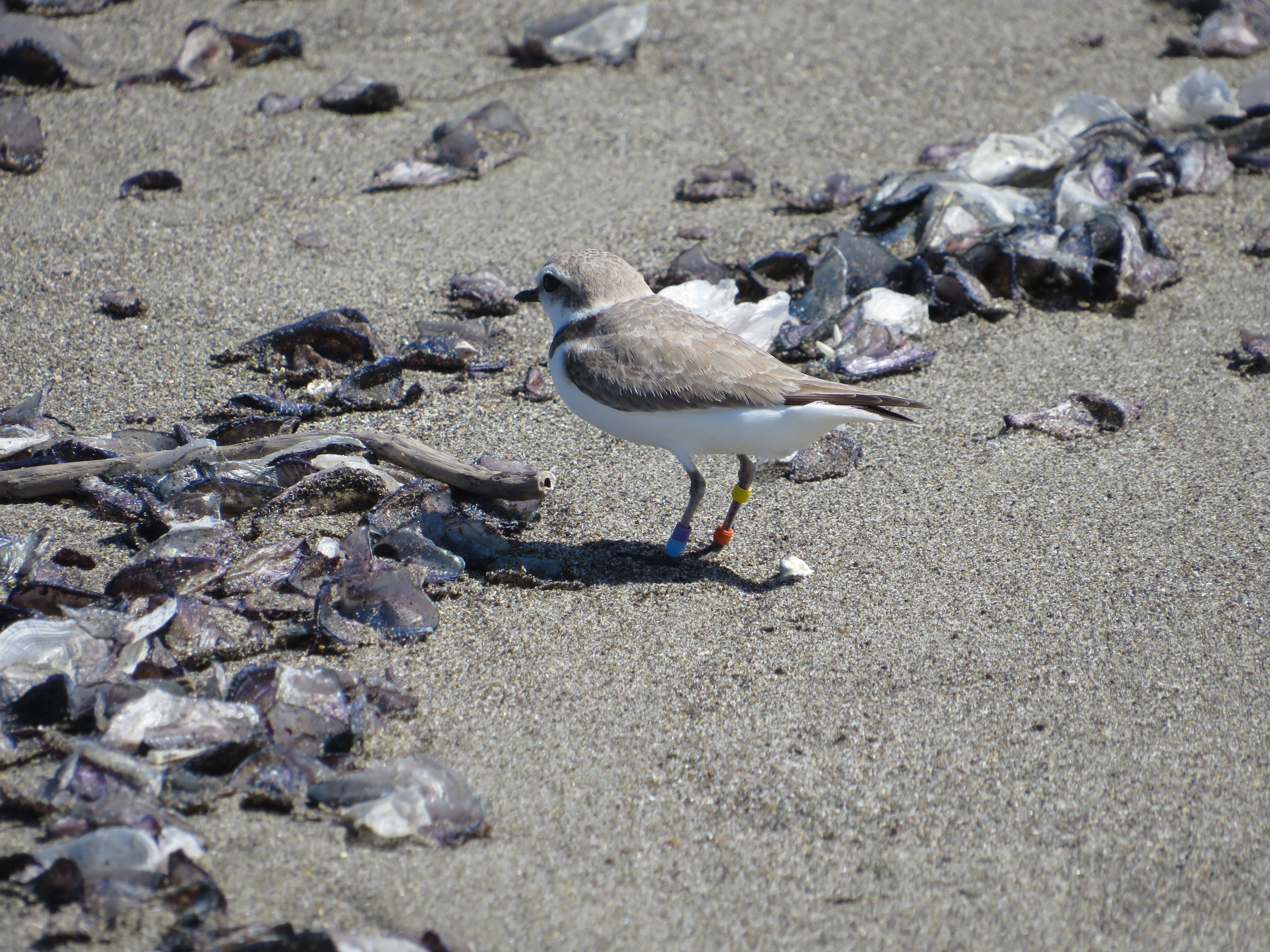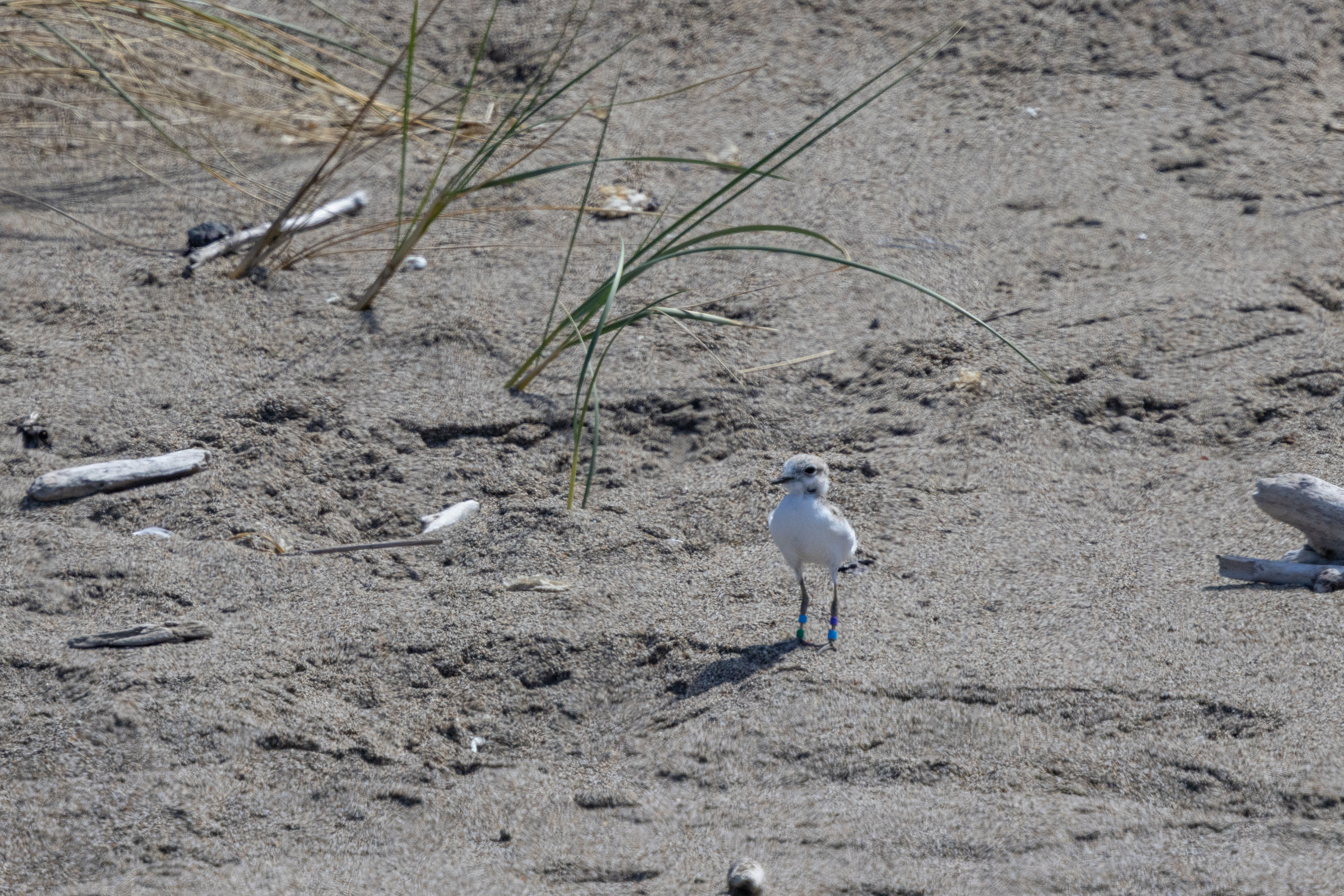Overview
Hello Ploverites!
The season’s snowy plovers fledge count is currently at 25. There is only one brood remaining and biologists will continue tracking this brood for the next two weeks. We're hopeful we can add a couple more fledges to the overall season count.
As the breeding season comes to a close, the winter flocks of snowy plovers continue to grow in number. As there are no nests to monitor, our surveys are primarily counting winter flocks and reading color banded plovers. After birds are done breeding for the season, snowy plovers disperse and form large flocks. Although some juveniles disperse immediately after fledgling, some will stick around and join the winter flocks. Biologists are hoping to confirm new fledges and resight confirmed fledges in these flocks.
The snowy plovers losing their breeding plumage also marks the end of the breeding season. Most of the contrasting breeding plumage of the plovers, mainly the black face patches and collars of the male plovers have faded. It is has become difficult to differentiate male and female snowy plovers in the winter. Juvenile snowy plovers have white edges on their feathers and are paler overall (i.e., lack any black colors in the face) and can be identified in the winter flocks. See the images below.
Earlier this week, a California State Parks Biologist from Mendocino County reported three breeding plovers (two females and one male) that were originally born at Point Reyes. The female plovers attempted nine nests in total. Although nest success was low, it is great to hear about the birds exploring new beaches and growing the population!
Winter flocks of snowy plovers continue to grow and can be found at the Abbotts Lagoon mouth, south Kehoe Beach, Limantour Spit, and North Beach. There were at least 60 plovers observed in the Abbotts Lagoon flock. Typically, winter flock numbers peak sometime in December or January, before birds begin dispersing for nesting areas in February and March.
If you have any questions, please feel free to contact Matt Lau via email.
Productivity Stats
- 41 total nests this season
- 0 active nests
- 28 hatched
- 12 failed nests
- 1 collected nest
- Up to 3 chicks on PRNS beaches (Abbotts Lagoon area)
- 25 chicks fledged
 The female plover va:yo (violet-aqua left leg, yellow-orange right leg), born at Point Reyes, attempted three nests and fledged one chick this season at MacKerricher State Park in Mendocino county.
The female plover va:yo (violet-aqua left leg, yellow-orange right leg), born at Point Reyes, attempted three nests and fledged one chick this season at MacKerricher State Park in Mendocino county.
Photo credit: Alison Cebula / © California State Parks
 The male plover av:rv (aqua-violet left leg, red-violet right leg), who fledged two chicks on Drakes Spit this season, was observed in a winter flock on Limantour Spit. Note how all his black markings on his face and neck collar are all faded. It is difficult to identify male and female snowy plovers outside of the breeding season.
The male plover av:rv (aqua-violet left leg, red-violet right leg), who fledged two chicks on Drakes Spit this season, was observed in a winter flock on Limantour Spit. Note how all his black markings on his face and neck collar are all faded. It is difficult to identify male and female snowy plovers outside of the breeding season.
Photo credit: NPS Photo / Aiko Goldston
 Recently fledged snowy plover va:ag (violet-aqua left leg, aqua-green right leg) from a North Beach nest. This juvenile is approximately 35 days old as of August 23, 2024.
Recently fledged snowy plover va:ag (violet-aqua left leg, aqua-green right leg) from a North Beach nest. This juvenile is approximately 35 days old as of August 23, 2024.
Photo credit: NPS Photo / Matt Lau
The National Park Service shall not be held liable for improper or incorrect use of the data described and/or contained herein. These data and related graphics (if available) are not legal documents and are not intended to be used as such. The information contained in these data is dynamic and may change over time. The National Park Service gives no warranty, expressed or implied, as to the accuracy, reliability, or completeness of these data. For more information: https://www.nps.gov/disclaimer.htm
